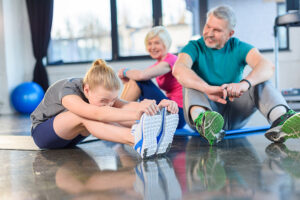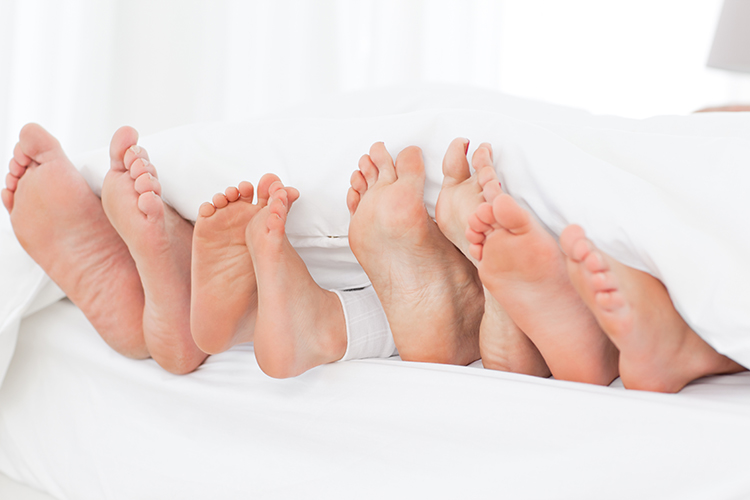A healthy foot is a happy foot! So, this month we’re discussing the benefits of foot care at every age. While each person’s feet are unique, there are some simple, universally beneficial foot care strategies for all ages and stages that will keep feet in their supporting role, long-term.
The importance of foot care from day one
Even babies and toddlers can benefit from basic foot care. This doesn’t necessarily mean frequent trips to a pedicurist or a pedorthist. New parents simply want to keep an eye out for delayed development, missing/skipping stages like crawling, or or physical anomalies that may warrant a conversation with their primary caregiver.
 As an example, a pigeon-toed gait (also called “intoeing”) is a common reason for visits from toddlers and their parents. This isn’t always something that requires treatment, but should be discussed so parents can ensure they respond to the issue appropriately.
As an example, a pigeon-toed gait (also called “intoeing”) is a common reason for visits from toddlers and their parents. This isn’t always something that requires treatment, but should be discussed so parents can ensure they respond to the issue appropriately.
Keep toe nails clipped – straight across instead of curved to avoid ingrown toenails – and feet unrestricted or lightly covered. Simple, healthy maintenance habits will stick with kids into adolescence, when they start managing their own hygiene.
As babies grow into toddlers, and then into school-aged kids, play will sometimes be barefoot. Other times, shoes will be required. Ensure shoes are supportive where possible and continue to watch for struggles with, or abnormal form when, walking or running. Early detection is key to correcting any bad habits or limitations.
As kids grow into teens, and then into adolescents, demands on their feet tend to increase, whether due to participation in sports, getting their first job, or simply getting themselves to all the places teens and young adults want and need to go.
While this demographic tends to favour style over comfort or support in their footwear, we recommend finding shoes, boots, and sport-specific footwear that ticks all boxes. Whether for work, exercise, or leisure, wearing comfortable, supportive shoes will help kids maintain foot health and avoid issues that can translate into foot, ankle, knee, hip, or back issues down the road.
If they haven’t yet visited a pedorthist, it’s a great time for a new teen to visit. Not only can certified pedorthists assess a teenager’s gait to ensure there are no major issues that should be addressed, but based on that assessment we can recommend the ideal footwear, exercises, and/or accessories for each individual’s unique needs.
 As adolescents move into adulthood, the demands on feet start to change, and may even further intensify. Young adults may begin careers that require them to be on their feet for long periods of time. Many tend to remain quite physically active for professional, fitness, and/or social reasons. And while it’s great to look good, it’s also important to feel good. So, having good basic foot care habits coupled with good footwear is essential for enjoying all of life’s experiences.
As adolescents move into adulthood, the demands on feet start to change, and may even further intensify. Young adults may begin careers that require them to be on their feet for long periods of time. Many tend to remain quite physically active for professional, fitness, and/or social reasons. And while it’s great to look good, it’s also important to feel good. So, having good basic foot care habits coupled with good footwear is essential for enjoying all of life’s experiences.
As adults move through early adulthood, middle age, and the “golden years”, feet tend to change. As people age they may start to suffer effects of reduced circulation and loss of collagen, as well as an increased risk of arthritis. Women often experience changes in their feet during and after pregnancy as well.
Regular exercise, foot soaks, massage, and elevation can all help relieve pain and maintain strength. A visit to a foot care specialist will help determine if there are any underlying issues that should be addressed. In addition, foot specialists such as pedorthists can recommend at-home regimens using exercises and foot care accessories and footwear to promote a strong, stable gait and stance.
In an upcoming post, we’ll take a closer look at how your foot health affects the rest of your body. In the meantime, if you have any questions or would like to schedule an appointment, please contact us.

